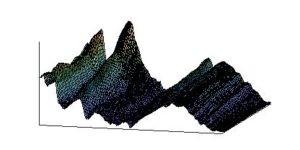Summary:
The poster describes the performed steps in order to develop a reproducible ultrasonic-based diagnosis method for lithium-ion cells. In order to assess how useful this method can be several measurements where performed to answer the following questions:
How easily can variations in temperature or the sensor coupling affect the results? Secondly, what are typical statistical errors that have to be expected and how big is the influence of sensor re-coupling? And finally how sensitive is the measured signal to changes within the cell i.e. the state of charge?
A mechanical framework is used to place two acoustic transducers on either side of the investigated cell. The framework allows for a precise sensor placement and includes a sensor used to measure the force with which the sensors are pressed against the cell. The measurement itself is performed with an oscilloscope which generates the excitation signal for each of the 500 measurement frequencies and measures both the excitation and the received signal. Based on the recorded data, the transmission is calculated as the ratio of the received signal and the excitation signal, where for both signals a fast Fourier transform is used to isolate the measurement frequency for each time series.
With this setup and methods, a first set of measurements is performed to investigate the influence of the temperature and the sensor coupling force. In these measurements either the temperature or the coupling force where held constant while the other parameter was varied to see its influence. Reference measurements without a cell where performed to isolate the cause of any dependencies. The results show that both parameters have a clear influence on the measurement and therefore have to be controlled. The reference measurements show that temperature influences both, the acoustic properties of the cell and the sensor characteristics, while the contact force only influences the acoustical cell properties.
Based on a second set of measurements the statistical error and the deviations introduced by re-coupling of the sensors to the cell is investigated subsequently. Several measurements performed after the same coupling show little deviation smaller than 2 percent over the whole frequency range indicating that the measurement itself is reproducible. Comparing measurements performed after different coupling attempts we find that the process of sensor coupling introduces a large error and needs optimization.
Following these measurements, the sensitivity of the method to internal changes in the cell was tested by performing measurements continuously during a C/10 discharge. We see that the resulting transmission is clearly dependent on the state of charge (soc) and generally decreases with decreasing soc. Interestingly, the form and magnitude of the soc dependency of the transmission changes over the frequency range, the latter is compared to typical measurement errors extracted from the preceding investigations.
We are happy to forward your request / feedback.

